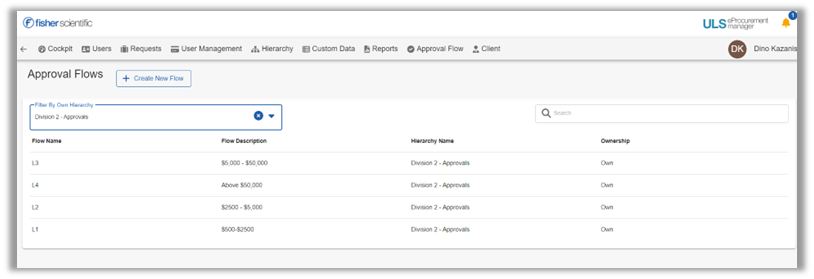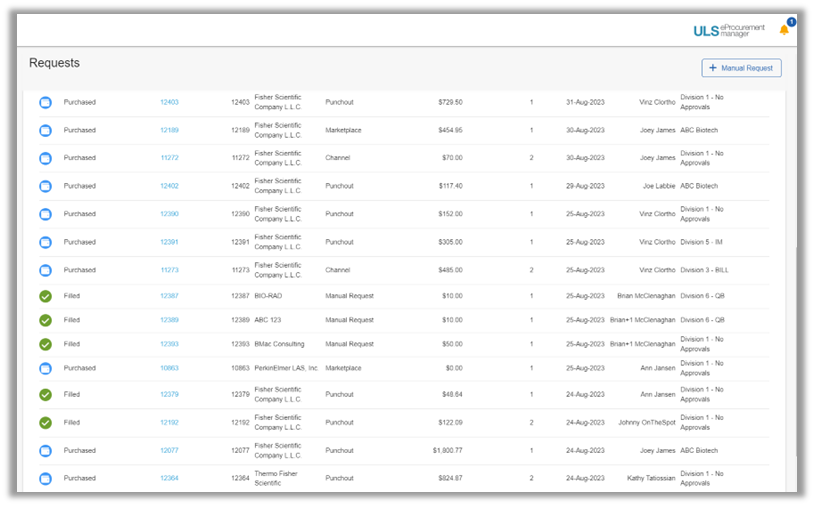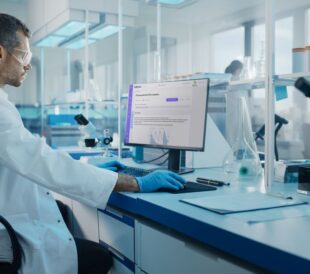
In our last blog post, we discussed why you need an eProcurement system to help manage your lab. Now, let’s talk about the how an eProcurement system can optimize your lab and what are the key features and best practices that will make that happen.
Here’s a quick recap of what an eProcurement system is for those who missed the last blog post:
An eProcurement system is a tool that allows the purchase of goods and services through the internet from a centralized interface that often provides access to special suppliers’ eCommerce sites called Punchouts or frequently updated electronic catalogs, while automating order management with workflow approvals, electronic purchase orders, order acknowledgements, shipping notifications, and invoices. It is also sometimes called a Procure-to-Pay system.
Common lab inefficiencies that procurement software can optimize
Common inefficiencies that result in pain for the lab managers and ultimately the organization include:
- Purchasing products from unapproved suppliers – When a company purchases frequently from a supplier, that supplier will often offer discounts or incentives in the form of a pricing agreement to maintain or grow a customer’s Share of Wallet (SOW). It makes sense to take advantage of these favorable prices whenever possible, but requestors are seldom aware of these agreements and may end up purchasing from other sources.
- Delays in obtaining approvals for purchases – How often does a formal request for purchase go to the incorrect approver or sit in an email inbox waiting to be approved? With managers and financial approvers needing to sign off on purchases over a certain dollar amount, it can be a nightmare trying to figure out who needs to approve a request. Approvers’ inboxes are constantly getting bombarded with emails and requests often fall off the radar and will require follow-ups to get approved, but who will remind the requestor?
- Ordering incorrect items for scientists – Often times, a scientist may not know how to shop for products, and they may rely on a lab manager or procurement resource to source and purchase the items. Unless the requestor is very specific with what they need, it is very easy to purchase items that are not desired.
- Ordering items that have already been ordered by other colleagues – Many times, when stock has been depleted, the first person to notice may submit an order to replenish, but without broadcasting every purchase to all stakeholders, how is one to know that someone else hasn’t already placed an order?
- Tracking orders from email notifications and individual supplier websites – Companies can have tens or even hundreds of suppliers they purchase from whether it’s online, email, by phone, or directly with a Sales Representative. Tracking the status of those orders without a central tracking system can be a pain.
- Matching Purchase Order, Goods Receipts, and Invoices (aka 3-way matching) is manual, error-prone, and tedious – One of the operational controls that is very important in any business is 3-way matching. If your Finance team requires 3-Way matching to pay an invoice, it is the responsibility of the purchaser to provide the required documentation to them. Remembering to file all order-related documents and maintaining an organized repository can be time consuming and in constant jeopardy of human error.
Procurement software features that optimize lab inefficiency
Now that we’ve identified what contributes toward lab inefficiencies, let’s look at procurement software features that help cure them.
Purchasing products from approved suppliers
A procurement system will typically have Punchouts and/or hosted catalogs for suppliers that are included or are requested by the customer. Some systems may limit purchases to only those suppliers that have been configured and will not allow users to purchase from anywhere else. Other systems like Thermo Fisher eProcurement Manager if they are listed in a vendor catalog or AP System.

Approval workflows
Procurement systems can handle approval workflows seamlessly and automatically: routing to one or many approvers and can even follow-up with an approver if an approval response has not been made.

Centralized order management
One of the inherent benefits of using a procurement system is that all requests begin there and by doing so, maintains a database of all activity related to each request. With this database in place, it is very easy to view, sort, and filter requests in any part of the purchasing process. Some systems can be updated directly from integrated suppliers when an order is being processed, shipped, and delivered. The ability to see all order statuses in a single place is a game changer for lab managers.

Automated 3-way matching
Another great benefit of procurement systems is the automated document association for purchases. When order-related documents such as Purchase Orders, Goods Receipts, and Invoices, are electronically sent or uploaded into the system, they are added to the database and automatically associated with the purchase order where orders that have been received and invoiced are clearly visible and available either in platform or via reports to any user that needs to know.

An eProcurement system can be a highly useful tool to help manage a lab and ensure that all the resources, tools, equipment, reagents and consumables are available to scientists as they need them. As a partner for the lab, Thermo Fisher Scientific offers solutions that will help meet your needs. Learn more about Thermo Fisher eProcurement Manager.




Leave a Reply